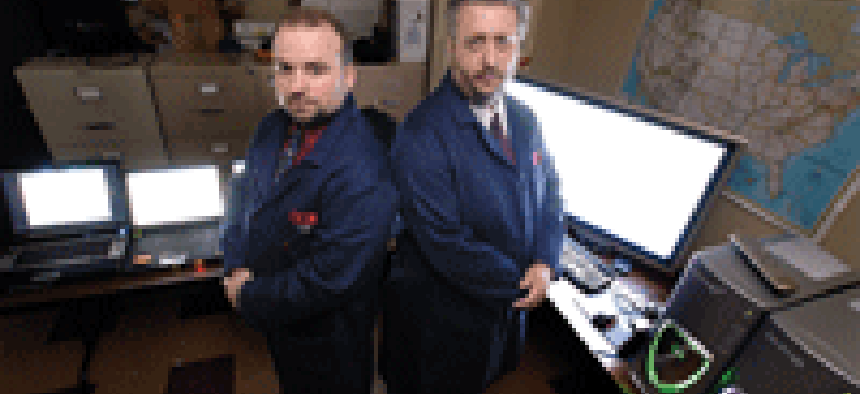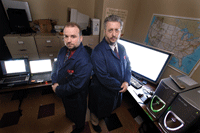Ask the GCN Lab

No question is too big or too small for the GCN Lab.

John Breeden II and Greg Crowe
Ned from Nevada:
I'm so angry I'm going to take my system out into the desert and shoot it. And as a military contractor, I have access to the right equipment. Every time my Windows desktop boots, it gives me an error saying it can't find a program. Then it tells me to make sure the path and library are available. Nothing bad happens, but I am tired of that warning message.
Greg Crowe, GCN Lab analyst: It appears that at some point in time, this now-missing program was installed on your system and Windows ran it at startup as instructed. At a later point, the program was probably incompletely uninstalled and although the program itself was removed, the instruction to run it at startup was not.
The most common reason for an incomplete uninstall is that someone didn't use the proper utility or options, such as Windows' Add or Remove Programs tool in the Control Panel. Or the software's uninstall program could have been faulty, but that's a rarity these days. It's also possible the executable file (the actual file that runs the program) was somehow deleted without a proper uninstall taking place, which left lots of threads lying around your system.
John Breeden, GCN Lab director: To fix this, you will need to use a very handy program called Msconfig.exe, assuming you're running a version of Windows 98 or higher. To run the program, open the Start menu and select Run. Type in 'msconfig' into the resulting box and hit Enter.
A window will come up showing everything running on your system. If you click on the Startup tab, you can see what programs the system attempts to load when it boots. Uncheck the box next to the program that's causing the problems and it will stop the system from trying to load that program next time. Be careful, though. If you don't immediately see the offending program, don't just guess. You may be able to compare your error message with some of the cryptic listings in the System Configuration Utility.
Crowe: Since the program isn't working anyway, it shouldn't cause you any problems to turn it off. Then you may want to go into the Add or Remove Programs tool to see if there's some part of the program you can still uninstall properly.
Breeden: And you and your system can live a long and bullet-free life.
Pete from California:
My state agency is letting employees purchase notebook PCs to telecommute and partially reimbursing us for the cost. I have a choice of Microsoft Windows XP Home or XP Pro. Pro is more expensive, but what's the real difference between the two?
Breeden: Those versions of XP are extremely similar. In fact, you can think of Home as a slightly stripped-down version of Pro. The fact is, most home users don't need the functions that are in Pro. If you're buying this notebook so that you can work at home, it's unlikely the Pro OS will be of any benefit to you. For instance, there is no file or folder encryption ability in Home, although that is easily remedied through a myriad of third-party programs that work quite well and can really lock down important files.
Crowe: Another major difference between Home and Pro is that the Pro edition can log into a Windows Server domain, such as the one you likely log into at work. It can also use roaming profiles, so you can get at your documents and settings no matter where you log on. But if you're not running a domain at home, just a workgroup or a single computer, then you don't need either of these abilities, and the Home edition should be sufficient. The Home Edition still supports wireless and wired networking, comes with all the power management features of Pro and has a built-in software firewall.
No tech question is too big or too small for the GCN Lab. Ask them about what's on your mind at AskTheLab@gcn.com.
NEXT STORY: NetApp storage for all





